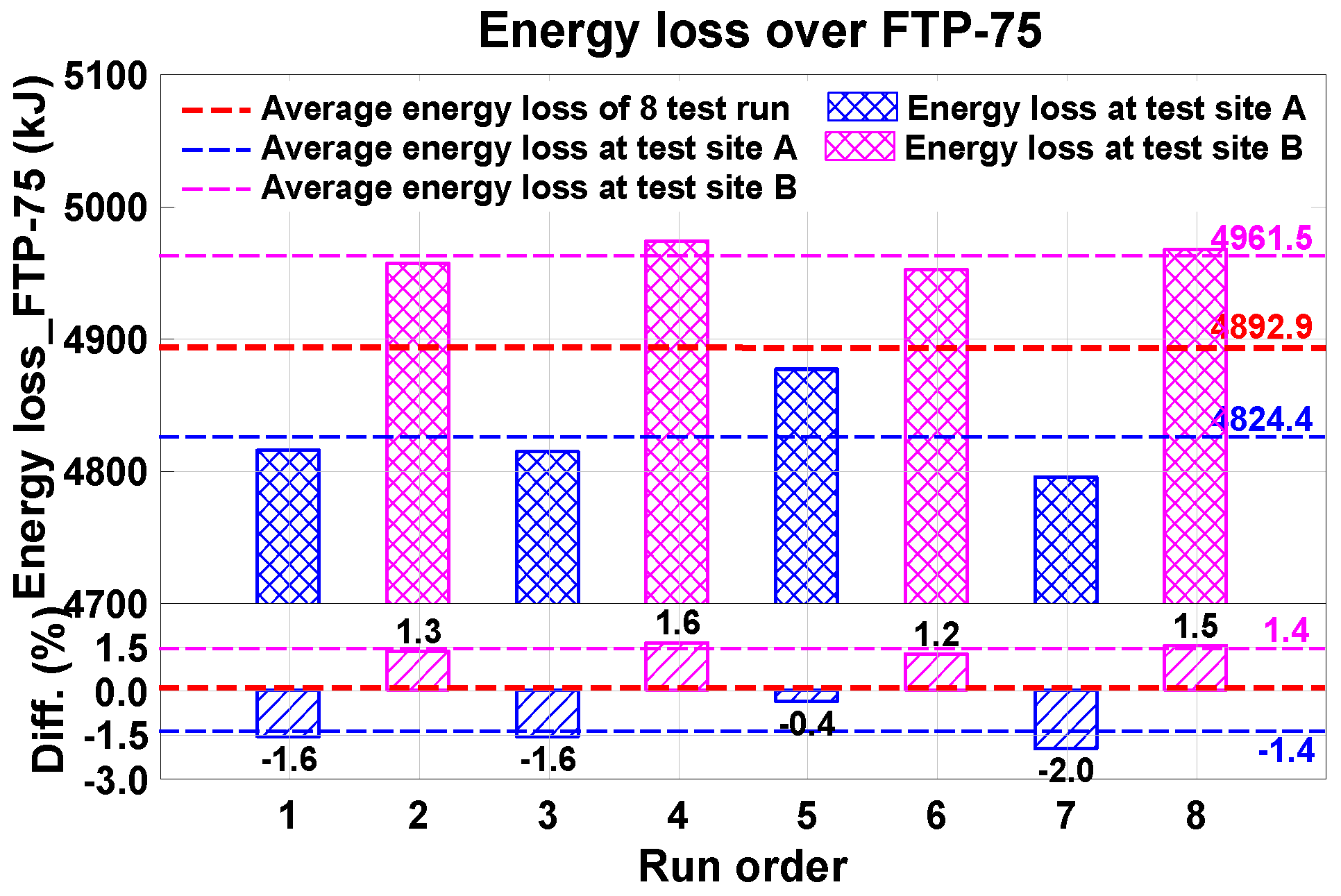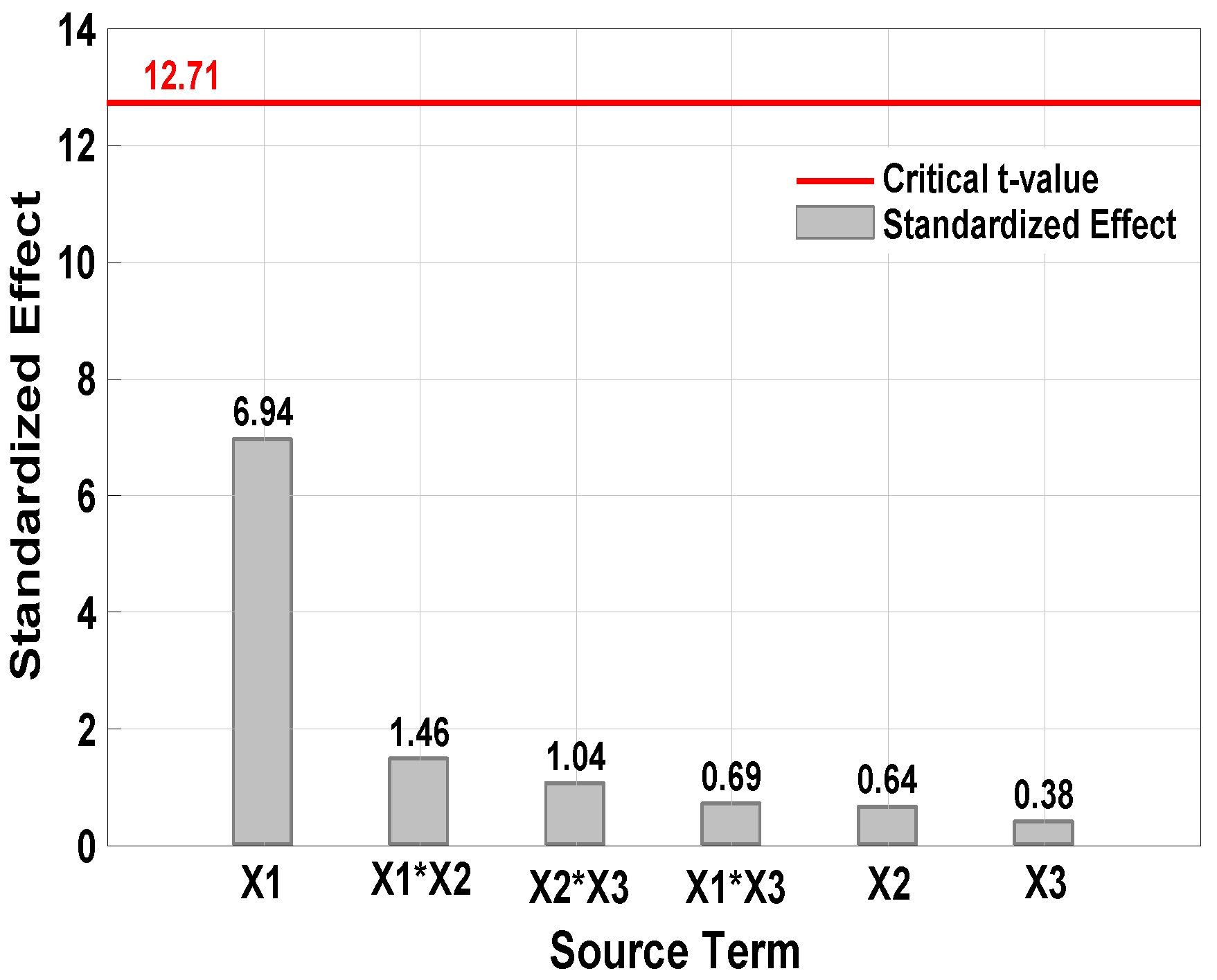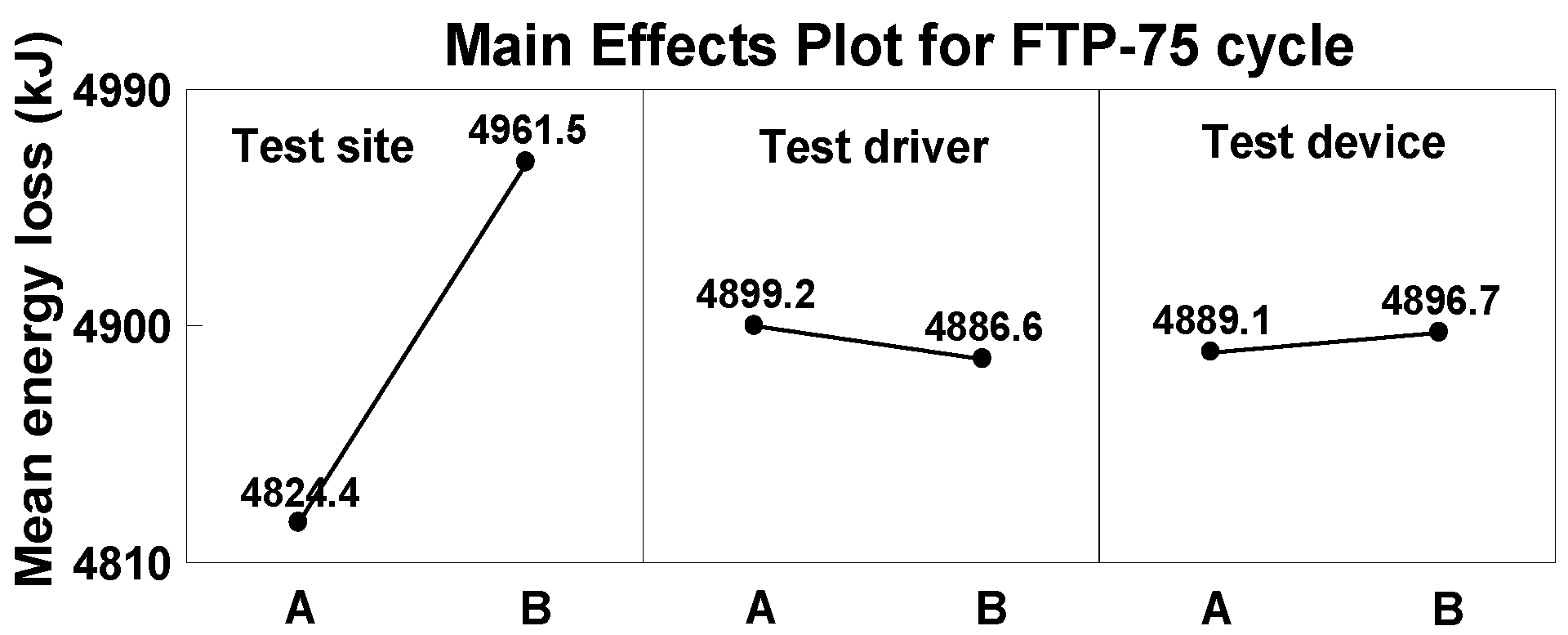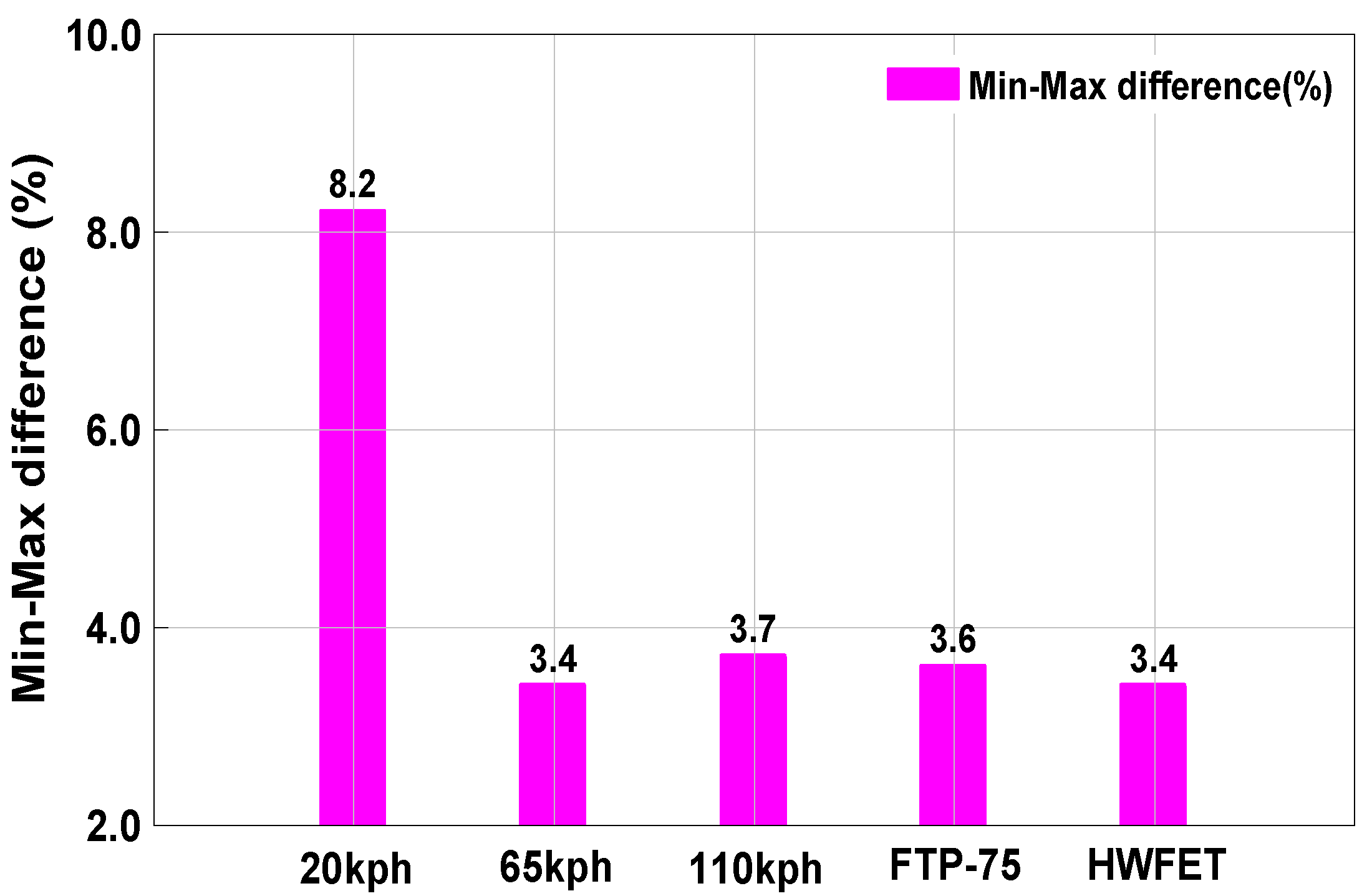1. Introduction
Regulations on fuel economy and carbon dioxide (CO
2) emissions around the world amid global warming will continue to be tightened until 2020. In the meantime, an improvement in fuel economy approximately 4% will be required per year [
1]. As automakers have undertaken tremendous efforts to develop vehicles with higher fuel efficiency, the overall fuel economy of vehicles has improved continuously over the last five years [
2,
3]. Such a demand for high fuel efficiency has stimulated greater interest among researchers regarding the analysis and reduction of road load, which had received only a fraction of the attention directed to the overall enhancement of engines or transmissions on the subject of improving fuel economy [
4,
5,
6,
7].
Although road load is one element of a vehicle’s fundamental performance, accurate and comprehensive analysis thereof has been highly difficult because the factors influencing it are spread throughout the vehicle. Studies of road load in vehicles began in earnest in the 1950s. In the 1970s, the society of automotive engineers (SAE) issued a more systematic, standardized method of performing a road load test—J1263—based on findings from previous studies. Subsequently, SAE issued J2263 based on the results of studies conducted in the 1980s and 1990s to enhance the accuracy of road load and raise the overall reliability of the test. Currently, J2263 serves as the standard norm for road load testing in North America. Both test methods are based on the same method: accelerating the test vehicle over a certain speed on a sufficiently long, straight, and flat road; shifting the gear to neutral and letting the vehicle run via inertia only; measuring the duration of deceleration; and translating it into road load [
5,
7,
8,
9].
Once the road load is determined, the vehicle’s fuel economy and emissions can be evaluated using such modes as federal test procedure 75 (FTP-75), highway fuel economy test (HWFET), or new european driving cycle (NEDC) by replicating the value on a chassis dynamometer. Previous studies, however, show that inconsistencies often exist between certification test results and actual test results and point to the use of the flexibility allowed in the manufacturer’s road load test procedures as being the cause of such inconsistencies [
3,
10,
11,
12,
13,
14,
15].
Additionally, a number of literature sources reveal that a vehicle consumes a lesser amount of fuel for the test, and emits less CO
2 when realistic road load values instead of the official ones are applied on a chassis dynamometer [
16,
17,
18]. One of the reasons for a rapidly growing discrepancy between official and real-world fuel economy and emission values of new passenger cars is weaknesses in the certification testing schemes and in the compliance protocols. These weaknesses have allowed vehicle manufacturers to be increasingly able to misuse tolerances and flexibilities, leading to downward-trending type-approval emission levels that are not matched by a similar decrease in real-world emission levels—indeed, the real-world values contradict the type-approval results [
19,
20]. This discrepancy can occur from various factors, such as driving style and conditions [
21,
22,
23]. However, about one-third of this gap is explained by vehicle manufacturers systematically exploiting technical tolerances and inaccurate definitions in the procedures specified for the coastdown tests that provide conclusive data used to set up the lab equipment for type-approval tests [
24,
25].
In fact, coastdown testing depends on, among other things, the road surface conditions, any local change in the flattening or gradient of the road, wheel and tire specifications, vehicle preparation, tire pressure, test weight, brake drag, air condition, delicate operation of the steering system by the driver, test equipment, and the data processing method [
3,
10,
11,
26,
27,
28]. For reducing the use of these flexibilities, it is necessary to devise a method of how to calculate, quantitatively, the road load values using coastdown tests.
However, there is no global law or regulation to quantitatively calculate the differences in road load, which are caused by many different factors. In the U.S., the Environmental Protection Agency (EPA) states in its guidance letter Compliance Division (CD)-15-04 that it will verify the road load force specified by manufacturers based on energy loss in the FTP-75 and HWFET modes by using their production vehicles starting in the 2017 model year [
29]. United Nations (UN) global technical regulation (GTR) No. 15 worldwide harmonized light vehicle test procedures (WLTP—Phase 1(b)) states in the general requirements section that each manufacturer is responsible for the accuracy of the road load values it specifies [
30]. Although the document does not provide criteria for confirming road load specifications, it is expected that WLTP Phase 2 will step up its efforts to develop such criteria. In Korea, the applicable regulation regarding fuel economy states that the road load should be calculated based on energy differences considering fuel economy modes, but fails to provide any specific method of calculation [
31].
Currently, road load data are measured and provided by the vehicle manufacturer. Regardless of whether the manufacturer uses the allowed flexibility given in the test procedures, testing by a third party to verify the data provided by the manufacturer may result in different road load data because of different test sites, test drivers, test devices, and/or methods of data processing.
The main objective of this study is to identify key factors that affect a vehicle’s road load correlation based on data obtained via road load correlation test between two test bodies after considering evaluation criteria for determining the correlation based on the energy difference, and give the compliance protocol concept for precise verification of the road load values specified by manufacturers. Thus, we removed the flexibility elements that may cause differences in road load data, such as the condition of the test vehicle; identified three key factors for determining the correlation between road load data provided by two test bodies (test site, test driver, and test devices); determined the orthogonal array based on design of experiment (DOE) full factorial design; and conducted a coastdown test according to the order and the J2263 test standard before statistically analyzing the results of the test. For the analysis, we derived criteria for determining the road load correlation based on energy differences.
3. Test Equipment, Method, and Analysis Procedures
3.1. Test Equipment
A compact sedan with a 2.4 L gasoline engine and a six-speed automatic transmission was used. The test vehicle conditions and test conditions, including the vehicle's run-in, tire wear, and weight, were based on “regulation for test procedures for energy efficiency, greenhouse gas emissions and fuel economy for motor vehicles” [
31]. Coastdown testing was conducted under similar outdoor air conditions, with the vehicle's tire tread being not lower than 50% of its original state and the reference weight being the equivalent test weight (ETW) after 6500 km of run-in.
Table 5 shows the specifications of the vehicle and its engine used by two test bodies for this study.
For the calculation of road load in accordance with the J2263 test standard, the distance, time, vehicle speed, direction, and speed of wind, and air temperature and pressure must be measured. For the calculation of distance, a noncontact speedometer that emits a digital pulse signal at regular intervals was used. For the calculation of time, a precision clock within the data acquisition device (with a resolution of 0.025 µs) was used. The vehicle speed was calculated from the distance traveled and time elapsed. For the measurement of the direction and speed of wind, an AQ 05305 model (R. M. Young Co., Traverse, MI, USA), a propeller-type wind monitor, was used to capture signals in an analogous manner. Air temperature and pressure were measured using a K-type thermocouple and a barometric pressure sensor incorporating piezoelectric elements.
Figure 2 shows the measurement instruments for coastdown testing as configured.
3.2. Test Method
In this study, identical conditions were applied with respect to factors that can be controlled by humans, including run-in distance, tire conditions, test weight, tire pressure, warm-up conditions, range of speed, “split” runs, number of tests for each direction, and rotational inertia weight, among those that may influence the road load correlation between two different test bodies. For related factors, such as ambient temperature, the most similar conditions were applied during the test. However, the two test bodies applied different methods to correct the direction and speed of wind against the vehicle blockage effect and different methods of measuring air temperature and pressure.
For a comparison of the road load correlations between the two test bodies, the test site, test driver and test device were switched after their respective tests before another round of testing to collect and save data from each round. Upon completion of all tests, their data were analyzed using a data analyzer to calculate the road load applied to the vehicle during each test.
Owing to the unavailability of a sufficiently long test road for both test bodies, coastdown testing was conducted such that the test road was divided into high-speed and low-speed sections.
During the road load correlation test, the test driver, test device, and test site, which are bound to be different when verification is made independently by a third party, were identified as major factors. The levels of such factors were set at 2 for the test.
Table 6 shows the factors and their levels. All three factors consist of discrete variables, and the response factor (
Y) represents energy (
E) calculated for the road load values derived sequentially from the series of coastdown tests considering the fuel economy test mode.
Fr represents the road load force from the coastdown test, and
Vt and
T represent the target speed for the fuel economy test and time, respectively.
3.3. Procedures for Test Result Analysis
To identify a significant factor (s) among those considered for this study, we determined the orthogonal array (
L8) based on a DOE full factorial design using Minitab version 16 (Minitab, State College, PA, USA). Coastdown testing was conducted according to the order and the J2263 test standard to derive test road values and calculate energy considering the fuel economy test mode.
Table 7 shows the orthogonal array used for the test.
We performed analysis of variance (ANOVA) on the calculated energy to determine which factors have a significant impact on the test for final road load correlation. If identifying significant factors using ANOVA were impossible, we performed pooling in which interaction factors of higher degrees with many noise factors are transferred to the error term to scale down the model and, ultimately, estimate the effect of each factor independently [
36].
Figure 3 shows the design scenario to determine which factors have a significant impact on the road load correlation among those identified in this study.
















